by Janelle Mathis, University of North Texas, Denton, TX
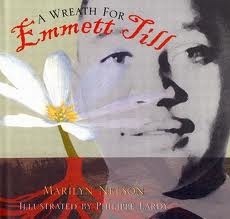 At the beginning of each semester, many teacher educators are faced with the challenge of inviting secondary preservice teachers, as well as teachers already in classrooms, into the realization that picture books are not just for young readers and that many chapter books written for young adolescent readers can hold their own with the traditional literature of the cannon. The task is not an easy one since these individuals have entered their chosen field, frequently English Education, with a personal background that has focused on the traditional cannon. The majority of students I face have not read children’s or adolescent literature since they were in elementary or middle school and even those titles were limited. And, while we often believe that at least the award winning titles will be part of their collective memory, a questionnaire I gave at the beginning of the semester last year revealed almost no knowledge of the basic ALA awards and titles that received these awards. Additionally, most students are not aware of the rich resource in young adult literature.
At the beginning of each semester, many teacher educators are faced with the challenge of inviting secondary preservice teachers, as well as teachers already in classrooms, into the realization that picture books are not just for young readers and that many chapter books written for young adolescent readers can hold their own with the traditional literature of the cannon. The task is not an easy one since these individuals have entered their chosen field, frequently English Education, with a personal background that has focused on the traditional cannon. The majority of students I face have not read children’s or adolescent literature since they were in elementary or middle school and even those titles were limited. And, while we often believe that at least the award winning titles will be part of their collective memory, a questionnaire I gave at the beginning of the semester last year revealed almost no knowledge of the basic ALA awards and titles that received these awards. Additionally, most students are not aware of the rich resource in young adult literature.
Meanwhile, as children’s literature scholars and enthusiasts, many educators are often passionate about the role that picture books and chapter books of all genre can play in the secondary classrooms. They can attest to this body of literature not being just for the very young. In fact, we realize that many of these books require the life experiences typical of older readers in order to understand the content and context of the issue at hand. Potential roles of this literature in the secondary classroom include enhancing a student’s knowledge base, creating intertextual connections with other texts, providing insight to the global society, providing an opportunity to examine literary elements in focused, shortened venues, and realizing the significance of the visual in both aesthetic and efferent responses.
At the close of the class I taught last semester, I asked for a personal response as to students’ current perspectives and insights on literature that they were taking from this course. Besides browsing opportunities with a comprehensive group of picture and chapter books, they had been engaged with numerous books, many international, in discussions. Additionally, they were reading extensively to complete their Top Ten Choices that they shared at the semester’s end as well as reading literature for the diversity of final project topics they selected. The personal response at the semester’s end was to be informal in keeping with the community that was formed and not part of their assessment for the course. Their responses all came from a shared notion as to how uninformed they were about children’s and adolescent literature at the beginning, but the reflections took several directions as they personally considered the value of such literature for themselves.
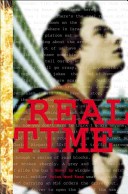 One area of response dealt with a general perspective of the usefulness of these books. “Books such Real Time (Kass, 2006) and When You Reach Me (Stead, 2010) taught me that these texts can be highly useful, and perhaps it is best to crawl out of the canon every now and again.” Another focus was that of not only informing the teacher about certain titles that are excellent for inclusion in the curriculum but informing the teacher about the youth they are teaching.
One area of response dealt with a general perspective of the usefulness of these books. “Books such Real Time (Kass, 2006) and When You Reach Me (Stead, 2010) taught me that these texts can be highly useful, and perhaps it is best to crawl out of the canon every now and again.” Another focus was that of not only informing the teacher about certain titles that are excellent for inclusion in the curriculum but informing the teacher about the youth they are teaching. 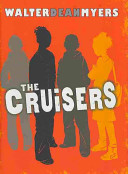 Books such as The Cruisers (Meyers, 2010), La Linea (Jaramillo, 2002), and Naming Maya (Krishnaswami, 2004) reflect the diversity of today’s classrooms and were important to these individuals.
Books such as The Cruisers (Meyers, 2010), La Linea (Jaramillo, 2002), and Naming Maya (Krishnaswami, 2004) reflect the diversity of today’s classrooms and were important to these individuals.
Student motivation was another key insight for many of these preservice teachers. With a desire to meet the needs of their future students and the realization that students need to read to develop their literacy abilities in an array of contexts, the topics in adolescent books provided an obvious way for these future teachers to invite their students into reading. One student wrote that originally his plans for teaching were to teach students with the same “stuff” he had read in school: the canon. “I thought that students needed to experience these works so they would come out of their literature courses well grounded in the important works. I am actually not sure why I thought this was important. I have read a whole lot of canonical texts in my life, and I have enjoyed quite a few of them. Many of them are very beautiful works that really made me think, but did they change my life? No. . . . Books have made me think about life, made me examine things, but they have never made me approach life in any dramatically different way.” He went on to describe that young adult fiction, in its focus on the lives of young people present and past, is fresh, relevant, and offers life’s lessons—across a global context. Titles such as Anything but Typical (Baskin, 2009) and A Little Piece of Ground (Laird, 2006) were motivating titles to this student.
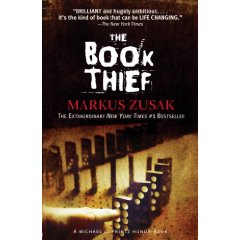 One student began to use literary critiques with young adult books and acknowledged that titles such as Bog Child and The Book Thief, contained the same quality literature as contemporary adult literature—that it was not “just” literature for young people. This same student focused on Nancy Farmer for his final project and was impressed by her ability to work through various societal issues in different well created stories.
One student began to use literary critiques with young adult books and acknowledged that titles such as Bog Child and The Book Thief, contained the same quality literature as contemporary adult literature—that it was not “just” literature for young people. This same student focused on Nancy Farmer for his final project and was impressed by her ability to work through various societal issues in different well created stories.
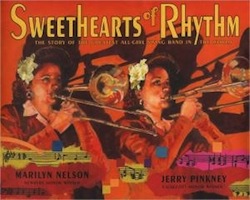 Picture books were intriguing to many students. We examined the role of art as a sign system and considered the sophistication of the art in many pieces of literature. Picture books such as Sweethearts of Rhythm (Nelson, 2009) created an awareness of the role of art in telling historical stories. Graphic novels, such as Robot Dreams (Varon, 2007) led to discussions that were focused on images and surprised students with the depth of insight about friendship that this seemingly simple book elicited. Books that were designed with abstract or buried possible meanings that varied greatly with readers’ responses helped students acknowledge that some picture books were created for older readers who could consider an array of possible meanings and hidden themes. Such titles that were mentioned here were Woolvs in the Sitee (Wild, 2007) and The Savage (Almond, 2008).
Picture books were intriguing to many students. We examined the role of art as a sign system and considered the sophistication of the art in many pieces of literature. Picture books such as Sweethearts of Rhythm (Nelson, 2009) created an awareness of the role of art in telling historical stories. Graphic novels, such as Robot Dreams (Varon, 2007) led to discussions that were focused on images and surprised students with the depth of insight about friendship that this seemingly simple book elicited. Books that were designed with abstract or buried possible meanings that varied greatly with readers’ responses helped students acknowledge that some picture books were created for older readers who could consider an array of possible meanings and hidden themes. Such titles that were mentioned here were Woolvs in the Sitee (Wild, 2007) and The Savage (Almond, 2008).
Another point of learning from this group of future teachers was that of the possibilities of poetry as found in this literature for young readers. Powerful poetry, such as A Wreath for Emmett Till (Nelson, 2009) or poetry books that offer enjoyable approaches to a variety of formats were found to be extremely useful. Students found that some of the more sophisticated poetry for young readers fit well with the classics they were planning to teach and offered many examples of the “voice of the people” such as in the works of Margarita Engle.
So, the blog for the remainder of December will continue to focus on specific titles in children’s, adolescent, and young adult literature and ways they can and are being used in secondary classrooms. The ideas that will be shared here can hopefully support secondary teachers and teacher educators as they work to create relevant literacy experiences in their classrooms using contemporary picture and chapter books. Please join in with suggestions regarding book selection as well as experiences and ideas for using this body of literature in secondary contexts.
Please visit wowlit.org to browse or search our growing database of books, to read one of our two on-line journals, or to learn more about our mission.
- Themes: Janelle Mathis, teacher education, YA
- Descriptors: Books & Resources, Debates & Trends, Student Connections, WOW Currents
